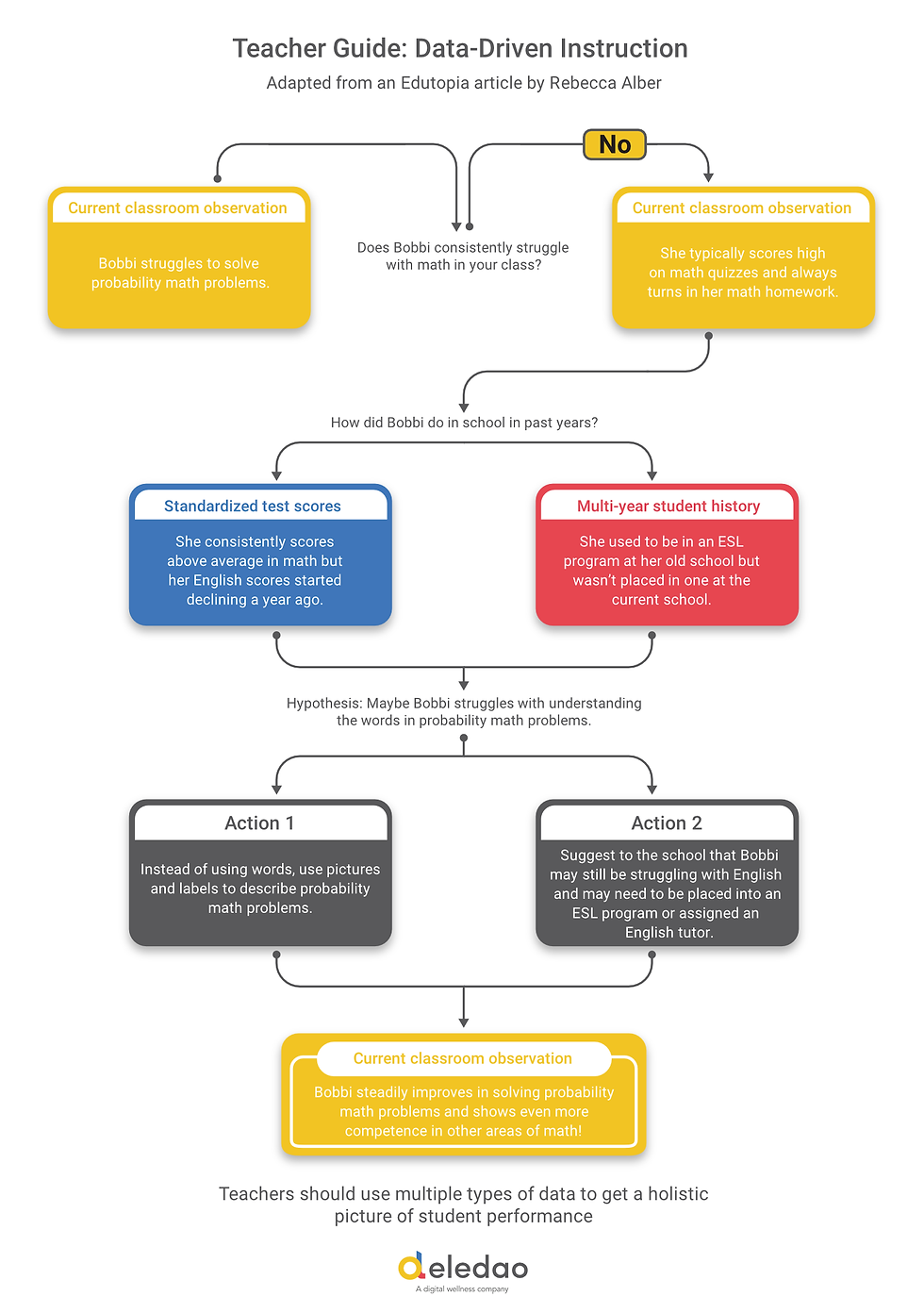For some, the word data is as cringe-worthy as the word diet. Yet, distilled down to the fundamental level, both help us set a baseline for goals, and they allow us to check our progress along our journey toward achieving our goals. However, the keys to any successful diet or use of data are appropriate choices and moderation.

As a former mathematics teacher, the worst (and longest) days of the school year tended to be those taken up by standardized testing. Data-driven instruction is not "teaching to the test," though that goal seems to be at the forefront of most administrators. And with the high-stakes nature of these tests, who could blame them?
Rather, data-driven instruction looks at the whole student achievement picture to develop methods and curricula to meet and address individual student needs.
The research clearly illustrates that when data is utilized to drive instruction, teachers can construct new teaching methods to facilitate student growth better. Furthermore, there are signs that instructional teams in data-focused schools believe that using data 'improves instruction significantly," which indicates buy-in to utilize data at the grassroots classroom level.
Given their unique vantage point of being in the trenches day-to-day with their students, here are three simple ways teachers can use student data to help their school district better develop a complete picture of their students.
From the classroom: utilize tools such as formative assessments, observations, and a variety of summative assessment opportunities (projects, essays, exams, etc.).
Cumulative files: diving into these certainly takes time, but this wealth of information can provide you with valuable insights into student history. There may be abrupt changes in behavior or academic performance or other trends that will be useful in helping you as the classroom teacher get a better understanding of that particular student.
Standardized test scores: in particular, spend some time looking at past performance on standardized tests – any trends emerging? Do they coincide with other changes that have been observed or measured? Perhaps consider having 1:1 conversations with students to discuss their scores. Proactively use the data – consider score levels (e.g., advanced, proficient, basic, below basic) when building your flexible groups or selecting pathways for differentiation.

Using data-driven education is not about asking teachers to spend hours of in-service time pouring over the minutiae of student data, standard deviations, z-scores, or similar. Data-driven instruction can be as simple as using what you already do as a teacher in your classroom. Every day teachers observe, make inferences, and adjust their teaching accordingly.
Granted, this 'data' is anecdotal. However, it still provides valuable information that can be used to assess the whole child instead of simply referring to standardized test scores as the primary metric. Schools need to view the entire picture for the child in order to have an accurate measure of how to best meet the student's needs.
Especially in the era of Covid-19, educators need to recognize how much students have lost educationally to ensure the curriculum matches their needs to move towards their goals. Many factors affect the work that schools are doing to help close the learning gap, including providing supports to assist students' social-emotional needs.
Educators cannot neglect how the internet affects student learning in an increasingly digital classroom. Students adapt the internet to suit their learning styles, and in turn, the internet molds the way students learn.
One way to harness the data from digital learning is through a schools' internet filter or the school's online classroom management software. Deledao Filter and Deledao Instruction provide filtering and online classroom management under one platform. Using patented and award-winning artificial intelligence technology, Deledao can give educators unique insights into how students are learning in a digital environment.
